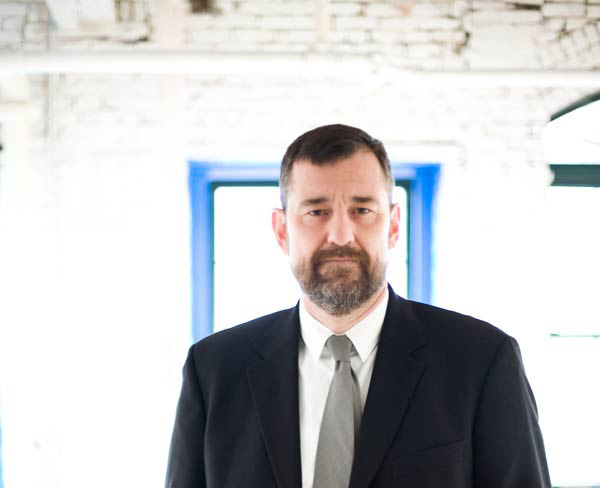A CONVERSATION WITH BILL ARNING
As the curator of MIT's List Visual Art Center, Bill Arning has brought a long list of impressive and challenging shows to the Boston area. Recently, it was announced that Arning will be leaving Boston to take a new position as the director of the Contemporary Arts Museum in Houston. I sat down with Bill to talk about his work at the List, and his new job at CAMH.
Matthew Nash: I had originally scheduled this interview before it was made public that you were going to be moving to Houston, and had been planning to talk about your programming for the List. But let's skip over all that and start with the new job. How did that come together?
Bill Arning: The Contemporary Arts Museum of Houston is just a really incredible opportunity, and I would say that about 80% of the calls I've gotten from either search people, or boards, have been for directorships. I guess in the public perception of where I was in my career arc, I could not avoid the fact that it was time.
I had also read a letter, written by Kathy Albrecht, one of the early founders here at the List, saying essentially that if those of us who were high up in our field as curators and not willing to step up to the play and become directors, the field was going to be in big trouble. This really resonated with me.
If you put a group of curators in a room, very soon the topic will turn to who has made the leap to director, who is about to make the leap to director, our fears of making the leap to directorships. So I was already talking with my fellows, and my colleagues in my generation about who had made the leap, and listening to what they were saying about the excitement, the thrill of it, and the satisfactions of the job.
MN: A lot of what I hear, as a critique of where museums seem to be going, is this perception that they are staffing the high level positions with "money people" as opposed to "art people". It may not be true, but it is a perception. Was that part of the push, among the people you know, to make the leap?
BA: Yes, the fear is that if more high level curators don't move to directorships, the jobs will go to people who come from strict business backgrounds. Yet, I can't actually think of too many museums that are devoted to contemporary and modern work that have made that decision.
MN: The decision to go with a "money person" over an "art person"?
BA: Well, a business person. When I hear "money people" I think of that as funders and board members. I'm talking about the people who have MBAs rather than Art History degrees, and yet almost everyone I know who comes out of Art History and takes a directorship wishes they had taken more business classes.
In my case, I've been a director before. I directed White Columns, and I did have the chief financial responsibility there for eleven years, but it was a smaller organization. Somehow, I have managed to put my skillset together in such a way that this position is not totally foreign to me. The scope of the budget is higher than I've had as a director before, but in terms of the basic structure of operations the departments are the same. Oh, except that I have a museum shop now, and I've never had a museum shop before!
CAM, because it is a non-collecting institution, is focused on the new. They have given first shows to many people, from Cindy Sherman on down...
MN: So, in that sense, it's not too different from The List. I imagine it's a larger scale but it seems like a similar mission.
BA: It is a larger scale operation. What's interesting is that Houston is laid out in such a way that the three major contemporary art institutions are very close to each other. The Museum of Fine Arts, which is an encyclopedic museum, is across the street. Their subsidiary program, the Glassell School of Art, which has one of the great studio programs, is also right across the street. The Menil Collection, where Franklin Sirmans is the contemporary curator, is about five minutes away by car. So, it's the Museum District and everyone knows it as that.
This is something that I've learned in my time here in Boston, which is that you have to look at all the spaces your primary audience can get to easily and understand that that is one experience for them. In order to decide what to show at the List, we needed to know what the ICA was showing, what the DeCordova and the Rose were showing and say "Okay, for someone who love art in Boston, this is an experience, how are we a part of that?"
MN: I feel like you and I travel through the same circuits, and there are some that you just hit a lot more frequently. There is the major museum experience, the South End experience, the Newbury Street experience, the off-the-grid experience...
BA: Boston's got a tremendous number of off-the-grid spaces. One of the things I quickly plugged into here was that some of the most interesting spaces, and some of the most interesting shows, were at spaces you knew weren't going to last a long time. If you weren't on the certain email list, or talking to certain people, you wouldn't know about something great to see.
MN: I have heard a lot of the talk around your departure from Boston that centers on how much support you have given to those spaces while they are around. You serve on their boards or help with fundraising, you promote and encourage others to see them while they are happening. So, how do you see that role being filled when you leave? Who are the curators who will support these spaces in those vital ways?
BA: Well, one thing I've noticed is that the recent arrivals to town are much more diverse in the spaces they go to. I'm including Jose Louis Blondet at the Mills Gallery, Evan Garza at the Center for Latino Arts, and several others. I know that some people think I made this strategic decision to get involved with those spaces, but when you're living in a city you want to stay stimulated and you've got to be there on the edge, at these spaces that aren't around for long, if you want to be entertained. You've got to support them to keep life exciting.
- Bill Arning Photo by Topher Cox
Image by Topher Cox and courtesy of Bill Arning.




